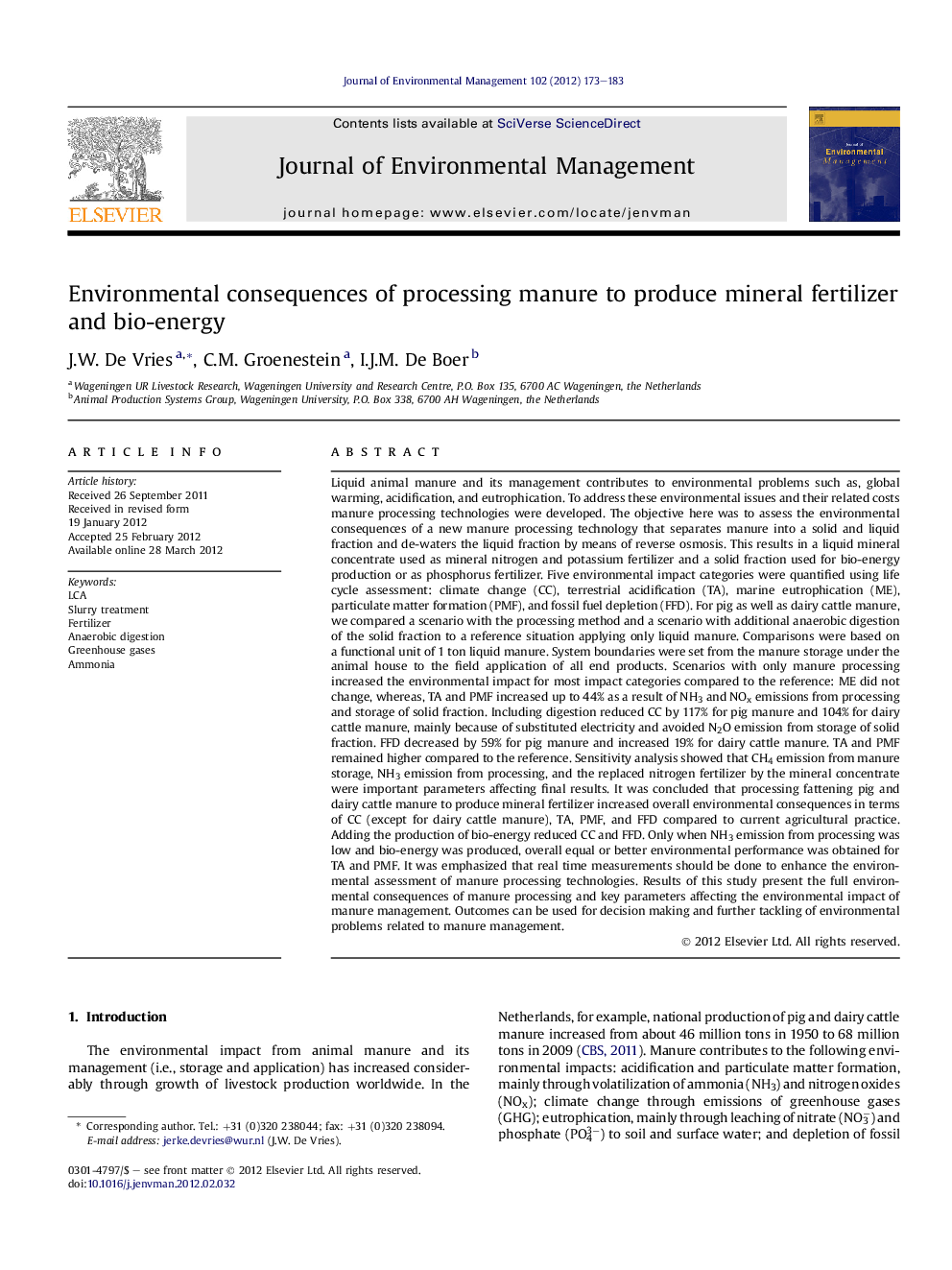| Article ID | Journal | Published Year | Pages | File Type |
|---|---|---|---|---|
| 1056825 | Journal of Environmental Management | 2012 | 11 Pages |
Liquid animal manure and its management contributes to environmental problems such as, global warming, acidification, and eutrophication. To address these environmental issues and their related costs manure processing technologies were developed. The objective here was to assess the environmental consequences of a new manure processing technology that separates manure into a solid and liquid fraction and de-waters the liquid fraction by means of reverse osmosis. This results in a liquid mineral concentrate used as mineral nitrogen and potassium fertilizer and a solid fraction used for bio-energy production or as phosphorus fertilizer. Five environmental impact categories were quantified using life cycle assessment: climate change (CC), terrestrial acidification (TA), marine eutrophication (ME), particulate matter formation (PMF), and fossil fuel depletion (FFD). For pig as well as dairy cattle manure, we compared a scenario with the processing method and a scenario with additional anaerobic digestion of the solid fraction to a reference situation applying only liquid manure. Comparisons were based on a functional unit of 1 ton liquid manure. System boundaries were set from the manure storage under the animal house to the field application of all end products. Scenarios with only manure processing increased the environmental impact for most impact categories compared to the reference: ME did not change, whereas, TA and PMF increased up to 44% as a result of NH3 and NOx emissions from processing and storage of solid fraction. Including digestion reduced CC by 117% for pig manure and 104% for dairy cattle manure, mainly because of substituted electricity and avoided N2O emission from storage of solid fraction. FFD decreased by 59% for pig manure and increased 19% for dairy cattle manure. TA and PMF remained higher compared to the reference. Sensitivity analysis showed that CH4 emission from manure storage, NH3 emission from processing, and the replaced nitrogen fertilizer by the mineral concentrate were important parameters affecting final results. It was concluded that processing fattening pig and dairy cattle manure to produce mineral fertilizer increased overall environmental consequences in terms of CC (except for dairy cattle manure), TA, PMF, and FFD compared to current agricultural practice. Adding the production of bio-energy reduced CC and FFD. Only when NH3 emission from processing was low and bio-energy was produced, overall equal or better environmental performance was obtained for TA and PMF. It was emphasized that real time measurements should be done to enhance the environmental assessment of manure processing technologies. Results of this study present the full environmental consequences of manure processing and key parameters affecting the environmental impact of manure management. Outcomes can be used for decision making and further tackling of environmental problems related to manure management.
► We model environmental consequences of a new liquid manure processing technology. ► Scenarios including and excluding anaerobic digestion were compared to a reference. ► Processing pig and cattle manure without digestion increased environmental impact. ► Adding anaerobic digestion reduced climate change and fossil fuel depletion. ► Key parameters were NH3, NOx, CH4 and N2O emissions from processing and storage.
